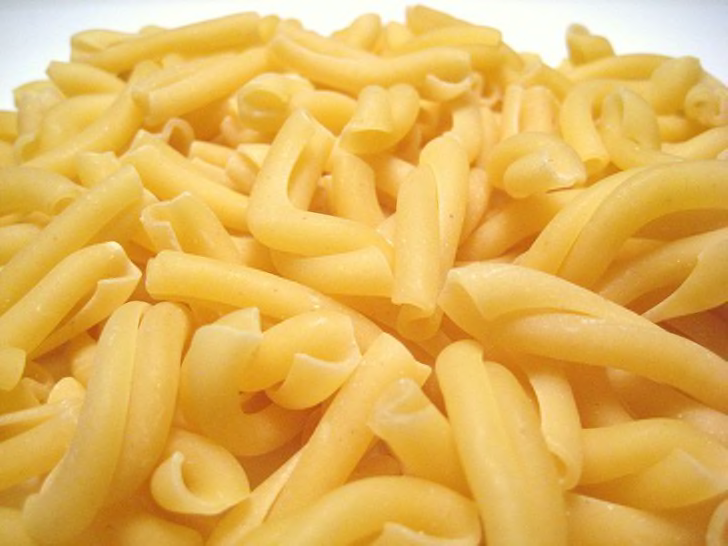


Long and flat like tagliatelle and pappardelle, but narrower. They’re also surprisingly easy to make yourself – check out our own recipe for homemade pappardelle ! They go particularly well with pork and wild boar-based sauces typical of Tuscany, from where the shape originates. Pappardelle can be used with the same sauces as tagliatelle, but adds more substance to a dish. Try pairing bucatini with our carbonara of dreams or a creamy cacio e pepe – either is a deliciously indulgent choice. This most comforting of pasta shapes is best enjoyed with sauces that can seep into its hollow tubes. Imagine spaghetti, but thicker and hollow in the middle. This makes them ideal for heavier sauces, such as a hearty meat ragú or a chunky vegetable sauce. Although fairly smooth in texture, their increased surface areas allows them to scoop up every last morsel of sauce. The pride of the Emilia-Romagna region, tagliatelle are long, flat strips of pasta. If you want to avoid causing significant distress to an Italian nonna, however, remember not to use spaghetti with ragú alla Bolognese – that’s a privileged position for tagliatelle. They can be used with many different types of sauces, from tomato-based sughi to seafood combinations such as spaghetti alle vongole. Spaghetti are long, thin strands of pasta with a smooth surface. Pasta lunga (‘long pasta’) comes in many varieties – from thick hollow tubes to flat, wide bands and wispy strands – and can be paired with a wide range of sauces. We’re all familiar with the sight of long strands or ribbons of pasta twirled around a fork, ready to be devoured.
#PASTA SHAPES HOW TO#
We’d love to delve into all of these, but the list would be as long as Bologna’s famous portici – so without further ado, here’s our rundown of Italy’s most popular pasta shapes and how to use them. Some are made by hand, whilst others are extruded through specially designed dies. Made either with pasta bianca (durum wheat flour and warm water) or pasta all’uovo (’00’ flour with fresh egg), there are hundreds of different shapes, each intended for a particular sauce or combination. It can be paired with almost anything – from the most indulgently rich meat ragú to delicate herb-infused butter sauces. Pasta is a wonderfully versatile ingredient, with a very long history.


 0 kommentar(er)
0 kommentar(er)
